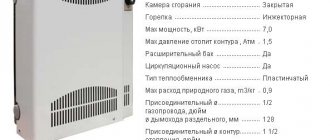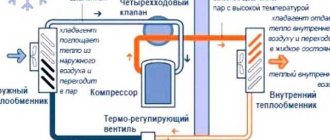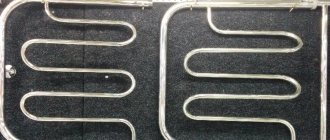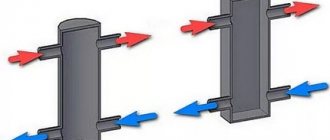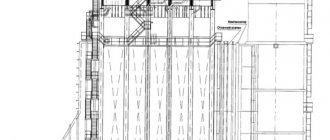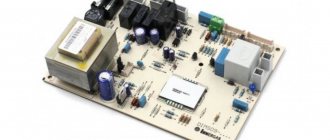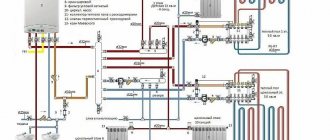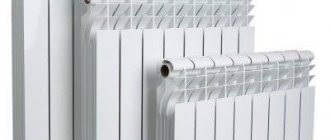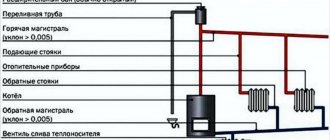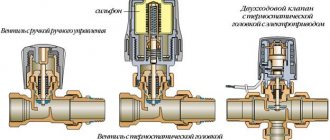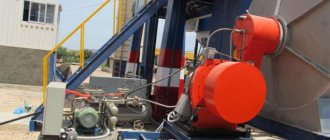Electric convector power calculation
The amount of power consumed depends on the area of the heated room and its height.
If the floor height does not exceed 2.7 m, then for 10 m2 an energy consumption of 1 kW is required. The room must be well insulated. Also, the power of the device depends on the number of windows in the house. The resulting thermal energy that is required to heat the house must be divided by the number of windows. Heaters are produced without taking into account additional heat loss. If your home or basement is poorly insulated, then you should take these factors into account when choosing an electric convector. When choosing an electric convector, you should calculate the required power, study the characteristics and types of heating elements. After reading our article in detail, you can easily choose the electric convector that suits you.
Rating of electric convectors for heating
Participants in specialized forums compiled a rating of electrical appliances taking into account the main parameters and operating features.
Electrolux ECH/AG-1500EF
A budget mobile model from a Swedish manufacturer, which attracts with its high efficiency and speed of reaching operating temperature.
A high-quality convector model from Electrolux allows you to reach operating temperature in just 80 seconds, effectively heating an average-sized room
The advantages also include a system of protective screens and the absence of air drying. The disadvantages of the device include its simple design and small heating area.
Timberk TEC PS1 LE 1500 IN
A convenient, high-quality device produced by a well-known international holding company, whose divisions are located in Europe and Asia.
The inexpensive mobile model on wheels has two heating modes (one of them is economical), high technical characteristics, as well as many additional functions:
- large area heating element;
- high-precision electronic thermostat;
- on/off timer;
- possibility of connecting accessories;
- air ionizer.
Disadvantages noticed by consumers include the inexpressive, according to some, design and sound effects (clicks) that are heard when the device is turned on and off.
Noirot Spot E-3 1000
The wall-mounted convector made in France has a nice design, an affordable price, high efficiency, and a wide range of settings.
The device has protection against overheating, a large memory capacity that allows you to restore settings in the event of a sudden power outage, as well as a special system that counteracts power surges in the network.
Among the weaknesses were the tight mode switch and the not too long cord.
Nobo C4F 20 XSC
Wall model from a Norwegian manufacturer. It has instant heating and is capable of heating large areas, which will please owners of large rooms.
The device has a nice design and has an overheat protection sensor, mechanical control of parameters with the ability to set the exact temperature, and ergonomic mounts that allow the device to be tilted.
The convector has almost no disadvantages except for the price, which is quite high.
Scoole SC HT HM1 1000W
The electric portable convector made in Norway has an attractive design. A small model at a budget price is a fairly powerful device that can instantly heat a medium-sized room.
The Scoole mobile model is distinguished not only by its bright color, but also by its good characteristics. The micathermic heating element guarantees sufficient power and high heating speed, and the mechanical thermostat has precise adjustment
Disadvantages include significant energy consumption, which increases operating costs.
Ballu ENZO BEC/EZMR 2000
The Russian-made model with a monolithic heater has an affordable price, but at the same time has high technical characteristics.
The convector, capable of quickly heating a room of 21-25 square meters, has an electronic thermostat, two heat transfer modes, one of which allows you to save electric current, and protection against overheating and tipping over.
There are also two mounting options (the kit includes fasteners for wall mounting and wheels for floor use), a backlit control unit and a temperature step of 1 degree.
Important advantages are also comfortable, uniform convection, the presence of a shutdown timer, and the ability to program modes.
Among the weaknesses, users note that the cord is not too long and the wheels are not strong enough.
Installation of equipment
Installation of a floor heating convector must be carried out strictly according to the recommendations described in the attached operating instructions, especially when installing an option built into the floor. We begin the installation work with careful markings, the algorithm of all actions is clearly shown in this video
https://youtube.com/watch?v=PbXkRkZAax0
Pipe laying
When installing the system in a house under construction, all work is completed before finishing work and pouring the floors. The convector is connected to the water supply using metal braided hoses or non-ferrous metal pipes, but it is better to make a separate connection from the central heating.
When replacing a central heating radiator with a floor convector, we make the connection according to a previously installed and current scheme.
Level check
It is very important to install the product strictly horizontally - for this there are adjusting bolts on it. This rule applies to all convectors - located on the floor or built into it
After installation and performance testing, the final filling and leveling of the floor begins: the edge of the product body should not protrude above the floor level. The last thing, after the floor has completely dried, is the decorative grille.
Safety precautions
Electric convectors require careful handling, like any electrical appliances. When using them, you need to remember the techniques for safe use of such units. For example, drying clothes directly on the body is considered a big mistake
The best outcome is for the device to overheat and turn it off if the protection is triggered. The worst case scenario is a fire.
For example, drying clothes directly on the body is considered a big mistake. The best outcome is for the device to overheat and turn it off if the protection is triggered. The worst case scenario is a fire.
The electrical outlet into which the convector is plugged in should be located on the side of the device, at a distance of 10 cm or more. Placing the socket on top is strictly prohibited.
If you take all these points into account, operation will be safe, the device will last a long time, and thanks to it the room will be warm and cozy.
How to buy the best convector heater: types of convectors
The most popular type of convector is electric, but there are several types of this equipment. Convective-infrared are distinguished by the principle of heating: they act on objects - walls, furniture, floors. By maintaining a comfortable temperature and humidity level, the air does not dry out, which creates a healthy microclimate in the room. A significant disadvantage of such a convector is its high cost.
Convection Infrared Heater
Film wall convectors, consisting of an electrically insulating film and a heating element, can be easily hung on the wall or removed and rolled up. They are very effective, but extremely short-lived. The service life of such a device is up to 3 years.
Gas ones effectively warm up even more rooms, are simple and safe to use, environmentally friendly and convenient. However, for such a convector to operate, it requires a gas source, as well as a connection to a chimney or hood, which significantly narrows the scope of application of this equipment.
The operating principle of water convectors is based on a central heating system. Such a heater can be floor-mounted, wall-mounted, or even built under the floor or into the walls. Such a convector is safe, convenient and durable, but it is capable of heating an area of up to 10 m², and the warm air from such a device is distributed unevenly. Therefore, most often this type of convectors is used in swimming pools and small rooms with a large glazing area.
Floor convectors powered by central heating
Types of heating elements of electric heating convectors with a thermostat The heating element is the most important part of the convector, because it determines how effectively your apartment or office will be heated. There are several types of heating elements:
- ribbon or needle-shaped. Such a heating element is a narrow dielectric plate with loops made of a nickel and chromium alloy on both sides. The main disadvantage of this design is the fragility of these hinges. Due to the ease of damage, tape heating elements are almost never used by modern manufacturers. In addition, this design does not provide for the presence of fins; as a result, the convector body heats up first, followed by the movement of warm air. This heating principle is not fast or efficient;
- tubular heating element - heating element. This is the most popular type of convector heaters for home and office use. Its design is simple: there are aluminum fins along the entire length of the heater tube. The heat transfer of the device is directly proportional to the size and frequency of the fins;
| Advantages of heating elements | Disadvantages of heating elements |
| Much lower temperature of the tube compared to the nichrome thread inside it. | The difference in temperature expansion between the aluminum plates and the steel tube causes a slight cracking sound that accompanies the operation of the device. |
| Long service life. Uninterrupted operation in rooms with high humidity - in this case, protection class IP24 is relevant. | As the device operates, the space between the fins and the steel tube increases, which leads to heat loss. |
monolithic heating element. Basically, it is similar to a heating element: there is a nichrome thread in a cast aluminum body, and heat transfer is provided by ribs on the body. But a dielectric backfill is used as an insulator. Thus, the difference in temperature expansion, leading to heat loss in the heating element, is leveled out. As a result, the efficiency of the monolithic heating element is maximum. The body of the device of such a convector hardly heats up, and the operation is quiet. The principle of operation of the unit is as follows: the hollow body acts as a wind tunnel; as the air heats up, thrust is created in it. As a result, cold air continuously enters the switched-on convector, is converted into hot air and flows upward, and all the air in the room is systematically warmed up.
Design and principle of operation of a water convector
A water convector is a compact heating device connected to a central or autonomous heating system in an apartment building. The operation of this heating device is based on the principle of convection - the movement of air currents.
Water heating convector
A heater consisting of a copper pipe on which aluminum fins are attached to increase heat transfer is used as a heat exchanger in a water convector. Fittings are provided for connection to the heating system pipes at the end of the convector. An air valve is provided to bleed air from the system.
Air valve on water convector
The working part of the convector is enclosed in a metal body coated with powder paint. The housing is equipped with grilles or openings for air intake and exhaust. Some models are equipped with a thermostat that allows you to set the desired air temperature.
Water convector device
Convection can be either natural or forced. During natural convection, layers of air located in the heat exchanger zone heat up, become lighter and rise upward, replacing heavier cold air. He, in turn, goes down and the process repeats. For forced convection, some models have a built-in fan.
Convector with forced ventilation
Operating principle of a water convector:
- the coolant - water or antifreeze - passes through pipes with aluminum fins and heats them;
- cold air enters through the intake grille and, passing through the heater, is heated, after which the air flows rise upward;
- new portions of cold air arrive in their place.
Operating principle of a water convector
Water (electric) convectors differ from conventional radiators in that they heat the air in the room faster and are able to create an effective thermal curtain. For this reason, water convectors are often located along panoramic windows, significantly reducing heat losses, and are also built into the floor along external cold walls.
Water convectors under the panoramic window
Note! Unlike heating radiators, water convectors heat up quickly and cool down just as quickly. During interruptions in the supply of coolant, the temperature in the room with water convectors quickly decreases.
Advantages and disadvantages of water convectors
The advantages of water heating convectors include:
- quick and efficient heating of the room;
- the ability to create a thermal curtain in front of windows or doors;
- light weight and small volume of coolant, water convectors can be hung on light plasterboard partitions;
- large selection of standard sizes and types of execution;
- the ability to embed the convector into the floor, walls or baseboards;
- aesthetics, convectors fit well into any design;
- the walls of water convectors do not heat up above +45 degrees, so they can be installed in a nursery without fear;
- water convectors have absolute fire safety.
Water heating convectors - design features and advantages
Disadvantages of convector water heating:
- the price of water convectors is higher than that of radiators of the same thermal power;
- the dimensions of wall-mounted water convectors are often larger than radiators;
- In rooms with high ceiling heights, water convectors may be ineffective, since warm air will accumulate under the ceiling.
Convector type in-floor heater
Note! Convection currents raise dust into the breathing zone, so in rooms with convectors it is necessary to do wet cleaning more often to ensure clean air.
Wet cleaning needs to be done more often
The best electric wall convectors
Such models are mounted to the wall using a bracket or screws. This type of mounting is convenient for standard window heights, and the dimensions of wall-mounted convectors make it easy to place them under the window sill. You can buy a wall-mounted electric convector in household and electrical appliance stores, or you can also place an order online. This category presents four models that beat out dozens of contenders to get into the TOP.
Noirot Spot E-5 2000
A simple electric heating convector, operating on the principle of natural convection, is capable of heating a room up to 25 sq/m and has a power of 2000 W. This model has a strict, unremarkable design; it looks like a standard radiator section, so it looks inconspicuous under the window. Noirot Spot E- is equipped with a small LCD display that shows the temperature of the heated room. The control is touch-sensitive, electronic, the device has 4 automatic operating modes, adapted to different temperatures. Also, Sport-E has small legs that allow you to rearrange the device if necessary.
Advantages
- Frost protection;
- Quiet operation;
- Quickly heats the stated area;
- Long power cord;
- Nice build.
Flaws
- Heavy;
- Rollers need to be purchased separately.
In general, reviews of Noirot heating convectors are quite flattering; buyers use these models for heating garages, vegetable stores, and summer cottages. No one considers even a relatively high price a disadvantage, since it corresponds to the quality of the device.
Stiebel Eltron CNS 150 S
This model is compact in size and has fairly high power (1500 W). It is designed for a room up to 25 sq/m and has simple mechanical controls. The convector is attached to the wall with a bracket; it can be used as a main or additional heater. The built-in thermostat ensures that the set temperature is maintained, and two automatic modes allow you to set operating parameters. The case is protected from frost, plus the Stiebel Eltron has a built-in relay that automatically trips when overheating or a power surge.
Advantages
- Waterproof housing;
- Long warranty period;
- Non-yellowing surface;
- Stainless steel heating element;
- Small price.
Flaws
- There are no supporting legs;
- There is no auto shut off option.
Unfortunately, the manufacturer did not provide an auto-shut-off function in the CNS 150 S, so the device will heat the air until the user turns it off.
Electrolux ECH/R-2500 T
Users like the stylish and powerful wall-mounted electric heating convector from Electrolux. It has a modern design, high power (2500 W) and quite a lot of functionality that allows you to use the device comfortably. Electrolux is capable of heating a room of up to 30 sq/m, while its weight and dimensions are small. The convector has several power modes; it can be installed on a wall or on the floor, thanks to its small but stable legs. This model is also distinguished by the presence of a solid heating element, which provides a large heat transfer area and instant heating.
Advantages
- Master Speed Heating system;
- Fall protection;
- Enlarged air intake;
- Removable control unit;
- Light weight.
Flaws
- Quite a lot of energy consumption;
- There is no moisture protection.
It is noteworthy that the control units for this model can be selected separately; they are presented in three versions. Among them there is an element with a Wi-Fi module, a simple mechanical or inverter unit.
Timberk TEC.E3 M 2000
Relatively simple, but very reliable heater. The assembly is quite strong, the body is made of light metal, plus it is possible to install the convector on rollers (included in the kit). The power of the device can be adjusted (from 850 to 2000 W). The control is mechanical and operates in only one mode, but the temperature can be set independently. If the device overheats, it automatically turns off, and the case is protected from moisture, so you don’t have to worry about a short circuit if liquid gets in. Separately, buyers praise the quiet operation and the absence of foreign odors.
Advantages
- Fast heating;
- Economical energy consumption;
- Built-in thermostat;
- Full operation indication;
- Thick, long power cord.
Flaws
When heating and cooling, clicking sounds are heard.
Buyers call Timberk the best electric convector for the garden and home, because despite all its positive parameters, it has minor drawbacks.
Types of convectors
Depending on what coolant is supplied to the heating system, you can choose a water or gas convector. The internal structure of the devices will be slightly different, but the principle is the same: the coolant heats the elements inside the device, through which air passes and picks up heat, then leaves the heater and warms the room.
Gas
Gas convector heater
Inside the convector there is a burner that heats the gas. The device has an air intake, one end of which is located outside. Oxygen is needed to support combustion. A chimney is needed to remove combustion products from the combustion chamber.
Gas convector heating at home does not require water, it is safe, since the combustion chamber is completely insulated.
The disadvantages of gas appliances are as follows:
- To install a convector, you need to obtain permission from the gas industry. The problem may arise due to the design of the house and the impossibility of installing a chimney.
- When heated with gas, the body temperature is above 60 degrees, so the process of thermal decomposition of dust particles begins, which settle on furniture and other interior items.
Mermen
Water heating convector
Water convectors can be installed in autonomous and central heating systems. They are reliable and durable, and are also capable of transferring up to 95% of the generated heat.
According to the type of installation, water heaters can be in-floor, baseboard, wall, floor, or basement. They are connected to pipes of any diameter through a series of adapters. The case temperature usually does not exceed 30 degrees, so small children cannot get burned by touching the device.
Water heating convectors built into the floor are planned at the stage of building a house, as niches are built under them and pipes are supplied. Once the floor is poured, it will be impossible to install such models.
Wall-mounted water heating convectors are usually placed under windows to reduce the flow of cold air if the double-glazed window is single-chamber.
If you need to hide the heating system, you can buy built-in models. They are mounted in special niches in the wall or mounted on furniture.
Among the advantages:
- Light weight, which allows you to install devices on plasterboard partitions.
- Compact due to slim body.
- You can customize and regulate the temperature.
- There are models with one or two heat exchangers.
Electrical
Electric floor convector heater
Electric convectors are considered the safest. Most manufacturers produce devices with the highest degree of electrical protection: not a single wire comes into contact with the housing. Thanks to this, the models can be operated without grounding.
The water heating temperatures are low enough so that oxygen does not burn and dust does not break down into microparticles that have a bad effect on the state of the human respiratory system. Low heating temperatures are compensated by the volume of heating elements.
Any heater consumes fuel. In this case, it is electricity, for which you do not need to go or travel far, such as for firewood or gasoline. Electricity consumption can be high if the premises are rather large in size or if the temperature in the winter season drops significantly below zero degrees. To save money, it is advisable to install double-glazed windows with argon coating, which prevents heat from escaping.
Infrared
Convection Infrared Heater
If a typical convector heats air by circulating it through a heat exchanger, then the principle of infrared heating of a house with convectors is different. The device heats surrounding objects using infrared radiation, and the objects give off heat to the surrounding space. In this regard, it is desirable that the device be installed in a place where its radiation on objects or walls will be maximum. Then the heat transfer will be high.
It is better to use infrared heaters as an additional source of heat, since when turned off, the room quickly cools down.
There are only two models of heaters in the infrared series - floor and wall. They require a working outlet with high-quality wiring. It is not advisable to use extension cords if the appliance will be operating at full power.
DIY convector installation
Today, electric convectors are one of the most popular types of heaters. This is due to a number of reasons. With its help, you can heat not only individual rooms of your house, but also the entire apartment. Installing a convector is a delicate process. This is why you should learn how to perform this process yourself.
In this article, we described in detail each stage of its installation. Thanks to this, you will learn how to install a convector yourself. We tried to make this process easier with video instructions.
Convector installation
Installing a convector on a wall consists of the following steps:
- First, unpack the device and turn it over on its back.
- Now you need to dismantle the fasteners.
- The bracket that you removed from the device should be leaned against the wall and the places of future fastenings should be marked with a marker.
- If your house has a wooden wall, then the installation of a wall convector is carried out using self-tapping screws. If the house has a concrete wall, you may need to drill holes using a hammer drill. Then you need to drive dowels into these holes and install the frame. Here is a photo where you can see how to install the convector frame. If you are interested, then you can read how to connect an electrode boiler.
- Now the convector should be placed on the installed bracket.
- Plug its power plug into a power outlet.
- Set the appropriate temperature. This can be done using a thermostat.
As you can see, the technology for installing an electric convector is quite simple. Even a beginner can complete this process. Below we will provide you with useful tips to make the installation process easier.
Useful tips for installing a convector
Sometimes many consumers may need to install an electric convector on the balcony. Usually the finishing on the balcony is presented in the form of PVC panels. The convector is light in weight, but plastic panels will not support it. In this case, you should try to choose a convector that is light in weight. In the photo below you can see the options for these devices.
Installing a heating convector contains one more nuance that you should familiarize yourself with before installation. Typically, the device comes with instructions in which the manufacturer indicates the optimal distance from the floor. Heating in a wooden house can also be done using a convector. If you have not found or lost this instruction, then you need to follow these tips:
- The height from the floor should be 20 cm.
- Leave a gap of 20 cm from the wall.
- The distance to the nearest objects that surround it should be at least 20 cm.
- The gap at the top and front should be half a meter.
- The socket should be no closer than 30 cm.
Special attention should be paid to connecting the convector to the network. Typically the power of this device does not exceed 3 kW
If your home has modern wiring installed, then it will be able to withstand this voltage. If you want to do without cords, then you can connect the electric convector directly. To do this, you will need to lay a separate cable from the shield to your device. Here is a video that will help you learn how to properly complete all installation processes.
This is all the instructions that will help you perform high-quality installation of the device. As you can see, installing a convector is not difficult.
3 connection diagrams for an infrared heater.
Choosing a water convector
To select a water convector, you need to decide on the installation location and type of construction, after which you can begin thermal calculations and selection of parameters. When choosing a model, it is important to consider the following characteristics.
You may be interested in information on installation of heating radiators
The thermal power of a convector is a parameter showing how much area the device can heat. For 1 m2 of area of an apartment or house with a standard ceiling height, 100 W of thermal power is required. Heat loss through windows is higher than through walls, so an additional 200 W must be added to each window.
Calculation example: for a room of 20 m2 with two windows, 20·100+2·200=2400 W, or 2.4 kW, is required. It is better to distribute this value evenly across several convectors, connecting them in parallel or in series. In this case, the temperature in the room will be more stable and uniform.
What you need to know about heating convectors
Overall dimensions are another important characteristic. The possibility of installing the convector in the chosen location depends on it. In this case, it is important to take into account not only the dimensions of the device itself, but also the required distances to the floor, walls and other structures (indicated in the passport for a specific convector model). For wall-mounted convectors, the distance from the floor must be at least 80 mm, and from the window sill - 100 mm.
Moisture protection is an important parameter when choosing convectors for installation in a bathroom, swimming pool, sauna washing area or greenhouse. Convectors can be designed for dry rooms with an average annual humidity of up to 85% or for wet rooms with a humidity above 85%. In the second case, corrosion-resistant materials and coatings are used, and in the case of in-floor convectors, drainage systems are used.
The type of circulation (natural (KBE marking) or forced (KVP)) is important to create the necessary microclimate. Convectors with a fan can create an effective thermal curtain near doors and windows, but at the same time they actively raise dust and cause drafts. The noise level of convectors with forced circulation is also higher. The fan in convectors runs on 12 V DC, for which you need to provide a power supply.
Floor convector with tangential fan
Working pressure is a characteristic that needs to be clarified when installing water convectors; in centralized heating systems according to SNiP 2.04.05-91 it is in the range of 8-9.5 bar, in autonomous systems it usually does not exceed 3 bar. Most models of water convectors are designed for an operating pressure of 1 MPa and a pressure test of 1.6-2.0 MPa, which is equal to 10 and 16-20 bar, respectively. If this condition is met, convectors can be installed in autonomous heating in an apartment building without restrictions.
SNiP 2.04.05-91. Heating, ventilation and air conditioning. Downloadable file (click the link to open the PDF in a new window).
SNiP 2.04.05-91
The internal volume of the heat exchanger is the most important parameter for autonomous heating systems when calculating the volume of coolant. On average, it is 0.7-2 liters and depends on the number of pipes and the length of the device.
Convector circuit
The maximum temperature for water convectors is usually +120-130 degrees Celsius, which is much higher than the permissible temperature in heating systems. At the same time, for safety of use, the maximum temperature of the device body should not exceed +60 degrees according to the passport.
The weight of the convector is important when installing wall-mounted models on walls and partitions made of plasterboard or other material with low strength. Taking into account the coolant, the weight of water convectors usually does not exceed 14-24 kg.
The degree of automation is a characteristic that takes into account the possibility of precise temperature control. Regulation is carried out by means of a thermostat and a valve; with their help, the amount of coolant necessary to maintain a given microclimate is supplied to the heat exchanger.
Thermostat
Note! When installing models with forced convection, it is necessary to ensure that the fan power supply is connected to a 220 V network.
How does a convector work?
The convector device is quite simple. The general diagram of the device is shown in the figure below. Let's look at the main details in more detail.
A heating element
In electric convective heaters, 3 types of heaters are installed.
- Needle ones consist of a body on which loops made of nichrome (an alloy of nickel and chromium) in the form of needles are mounted. The loops are located on both sides and tend to quickly heat up and cool down. This makes it convenient to regulate the required temperature in the room. Another advantage of units with a needle heater is their low price. But these heaters also have disadvantages: needle elements cannot be used in rooms with high humidity, and they can burn oxygen and also dry out the air.
- A heating element (tubular electric heater) is a hollow tube with a nichrome spiral located in it. The area between the body and the spiral is filled with a dielectric. For better heat transfer, fins are installed on the heating element body. The advantage of the heating element is that its body is hermetically sealed, so devices with such a heater can be used in damp rooms. The disadvantages of the heater are: low efficiency, long warm-up time to reach operating mode, a working heating element produces a slight crackling sound.
- Monolithic ones consist of a ribbed body with a nichrome thread soldered into it. Such heaters have maximum heat transfer, are silent, and all parts of the body are heated evenly. Devices with monolithic heaters are the most expensive, in comparison with those described above, and are considered the best. Read more about the features of each type in the article types of heating elements in convectors.
Control unit or thermostat
The heating unit is controlled using a mechanical or electronic thermostat:
Cheaper models of units have a mechanical thermostat, which breaks the electrical circuit when a certain heater temperature is reached. When the device cools down, the circuit closes again and the heater continues to operate.
The disadvantage is that with such a regulator it is not possible to maintain the desired temperature in the room, since the thermostat is activated by heating the bimetallic plate, and the air temperature is not taken into account. With electronic control, several sensors interact. Their operating principle is to monitor the heating of the unit itself, as well as the ambient temperature
After processing the data by a microprocessor, the operation of the heater is adjusted. Operating modes can be set from the panel located on the case or from the remote control (if provided). There are models of devices with programmable modules. With their help, you can set the room heating program for a week. This is convenient, for example, if there is no one at home on weekdays from 8:00 to 17:00. Therefore, the device is set to a maintenance temperature, and when household members arrive, the device turns on at full power and quickly warms the room to the required levels.
Types of convector heaters
Structurally, all convector heaters are very similar, but several types are produced - wall-mounted, free-standing, floor-mounted and for rooms with high humidity.
They can be divided into high ones - with a height of up to 650 mm, and low ones - up to 200 mm.
Wall-mounted and free-standing are classified as high. The difference between them comes down to the fact that wall-mounted ones are equipped with lugs for mounting on the wall, making them stationary and providing heating only for the room where they are installed.
Free-standing - they have legs with wheels at the bottom, which allows them to be moved if necessary, providing warmth in different rooms.
A feature of this type of heaters is the high heating of the heating element, which, in combination with a high body, ensures high air circulation, which ensures their high thermal efficiency.
Floor heaters are made slightly differently, although their design is identical. They are not high, they are also called “plinth”.
But their width is much greater. Some models reach a width of 3000 mm.
Essentially, this is the same convector, but located horizontally. The large length and width, while its low location allows the heating elements to heat up less to achieve the required temperature, since they heat the lower layers of air more efficiently.
POPULAR WITH READERS: Wireless switch, what is it and is it worth installing?
I often install such heaters under window openings.
The inconvenience of using floor heaters comes down to the same width. They take up more floor space, which leads to the possibility of frequent kicking.
Although some home owners, during construction, pre-allocate niches in the floor for installing such heaters, and then protect them with a grille.
Underfloor electric heating convector ESK series.
The types of convectors described above have one feature - they cannot be used in rooms with high humidity levels.
However, special versions of convectors are produced - waterproof. In such heaters, all internal elements are protected from moisture and can be used in any room.
Operating principle of an electric convector
The operating principle of a thermal convector is based on the property of air, which causes it to rise when heated and fall again when cooled. The heating element of the convector causes the air mass around it to move. The heated streams rush to the ceiling, where they cool and descend. The cycle repeats.
Thermostats allow you to maintain the desired temperature. Mechanical or electronic sensors in the control system regulate the operation of the convector. With a mechanical block, the contacts close when the contact plate cools, thereby heating up further. The electronic control unit turns the device on and off depending on the set temperature within a certain period of time.
Electric convector device
It is worth mentioning right away that different models may differ in their design in some blocks, but the main elements remain unchanged. So, all electric heaters consist of:
As can be seen from the figure, the operating principle of an electric convector and its design are quite simple.
- body made of metal;
- heating element (heating element);
- various sensors (temperature, convector position, overheating sensor);
- control panels;
- thermostat;
- gratings.
The body is usually made of light alloy metal. It performs a protective function and is made lightweight specifically to reduce the weight of the product. Two gratings are inserted into it. One of them is located below. Through this hole, cold air is sucked in by the convector. The second is located in front of the heater in its upper part. Already heated air exits through it.
Air can enter the electric heater either naturally (convection, when air rises when heated) or forced. Fans are often installed in devices to increase the air supply, thereby increasing the efficiency of the convector. This operating principle of convector heaters reduces the load on the heat exchanger, which increases the reliability and durability of the device.
The temperature sensor is installed in the lower part of the heater. Typically, it takes a temperature measurement every 45 seconds, after which a signal with the result is sent to the control unit, where the electronic thermostat turns the device on or off (depending on the sensor readings).
Types of heating elements
The heart of the convector is the heating element. Electric models typically use three types of heating elements:
- monolithic;
- tubular with aluminum fins;
- needle.
It is recommended to install models with a monolithic heating element in the bedroom, as they do not make any sounds and will not interfere with rest.
A special feature of a heater with a monolithic heating element is its noiselessness. In this case, the body is made solid (cast). The heat loss of this device is minimal, so it has a high efficiency rate.
In the case of a tubular heating element, the heating element is a steel tube in which a nichrome thread is stretched, and the internal space is filled with insulating backfill (heat-conducting). Fins made of aluminum are fixed to the tube, which provides the device with high heat transfer and increases the degree of convection. Heaters of this type have a long service life and can be installed in the bathroom, but sometimes they make a cracking noise.
Needle heating elements consist of a dielectric thin plate on which a heating chrome-nickel filament coated with insulating varnish is installed. Convectors with such a heating element heat up and cool down almost instantly, but they should not be used in rooms with high humidity levels. The main advantage of devices with needle heating elements is their affordable price, but they cannot be called durable.
Convector electrical circuit
As can be seen from the figure, the circuit of electric heaters of this type is quite simple.
It is enough to connect the device to a 220 V network using a cord, then press the switch button (it completely disconnects the device from the electrical network, so you don’t have to remove the plug, but use the button). The control panel is usually a temperature controller. Also included in the circuit is a safety sensor that opens the circuit when overheated, and a thermostat that turns the convector off or on depending on the ambient temperature.
Advantages and disadvantages
Electric convectors have enough advantages. Its first and most important advantage is high efficiency; the convector provides this indicator at 95%.
POPULAR WITH READERS: All about plug sockets, classification, degrees of protection, selection criteria, installation features
In addition, positive qualities also include:
- Easy to install and use. All you need to do is place it next to the outlet, connect it to it and set the temperature;
- The design of such a convector is very simple, which ensures high reliability. The average service life of a convector is approximately 15 years. At the same time, it requires minimal maintenance - periodic cleaning of the device from dust;
- The presence of a thermostat in the design ensures automatic maintenance of the temperature in the room, without human intervention. When the desired temperature in the room is reached, it turns off. As soon as the temperature drops, the convector turns on. Moreover, the convector is guided by the temperature in the lower part of the room, that is, by the cold air. Therefore, the temperature sensor is located at the bottom of the convector;
- The design of such a convector has no moving parts, which ensures silent operation. The only source of noise can be a thermostat, made in the form of a mechanical relay. When activated, such a thermostat will create a clicking sound when the contacts close. Electronic thermostats do not make any sounds;
- These heating devices begin to provide heat to the room almost immediately after being plugged in, and are able to quickly heat the air in the room;
- Safety of use. Even at maximum performance, the heater body, which also participates in heat exchange, does not heat up to such a temperature that can cause a burn to a person. A fuse protects the device from overheating.
Flaws.
However, convector heaters also have disadvantages. Although they are few and far between, they exist.
So, the disadvantages of convectors include:
- Significant energy consumption. Although this indicator largely depends on the thermal insulation of the room. With strong heat losses due to drafts, poor insulation of walls and windows, energy consumption will be high, but if thermal insulation is at the proper level, energy consumption will not be particularly high;
- It will not be economically feasible to heat large rooms with convectors. They are more suitable for local heating. That is, they are best used either in small rooms or as a supplement to centralized heating;
- Convector heaters, although they do not heat the air to significant temperatures, still dry it out somewhat. Therefore, when using such devices, it is better to worry about air humidification in advance;
- Even without moving parts, the convector is capable of spreading dust throughout the room. It does this because the air circulates during its operation due to heating, and therefore moves small dust particles.
We recommend reading - how to choose electric heating boilers.
